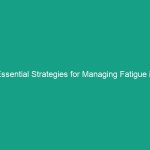Introduction
Good morning team! Today, we are going to discuss a topic that is often overlooked but incredibly important for our Workplace Safety: Essential Sleep Guidelines: Avoid Risks and Boost Workplace Safety. Getting a good night’s sleep is not just about feeling rested; it plays a crucial role in ensuring that we are alert, attentive, and safe while performing our daily tasks. In this Toolbox Talk, we will explore how inadequate sleep can lead to significant Safety risks and what we can do to enhance our sleep quality for a safer work Environment.
Understanding Essential Sleep Guidelines
What do we mean by Essential Sleep Guidelines? This term refers to the practices and habits that help ensure we get sufficient and quality sleep each night. Sleep is vital for our physical and mental health, impacting our ability to concentrate, make decisions, and react quickly—all essential factors for Workplace Safety.
Many employees may think that they can function on less sleep or that sleep isn’t directly related to their work performance. However, studies show that sleep deprivation can lead to impaired judgment, slower reaction times, and increased likelihood of accidents. It’s crucial to understand that sleep is not a luxury; it’s a necessity for maintaining our Safety and productivity on the job.
Key Hazards, Risks, and Safety Considerations
Let’s delve into some of the specific Hazards and risks associated with poor sleep and how they relate to Workplace Safety:
- Decreased Alertness: Lack of sleep can lead to drowsiness, reducing our ability to stay alert during critical tasks.
- Impaired Decision-Making: Insufficient sleep negatively affects cognitive functions, leading to poor decision-making and riskier choices.
- Increased Accident Rates: Studies show that workers who do not get enough sleep are more prone to accidents and injuries on the job.
- Health Issues: Chronic sleep deprivation can lead to long-term health problems such as obesity, heart disease, and anxiety, which can further impact safety.
Ignoring these risks can have real-world consequences, including workplace injuries, increased healthcare costs, and even fatalities. It’s essential to recognize these dangers and take proactive measures to mitigate them.
Best Practices, Procedures, & Actionable Advice
Now that we understand the risks, let’s look at some Best Practices to improve our sleep quality:
1. Establish a Sleep Routine
Try to go to bed and wake up at the same time every day, even on weekends. This helps regulate your body’s internal clock.
2. Create a Restful Environment
Your sleep environment is crucial. Keep your bedroom dark, quiet, and cool. Consider using blackout curtains and white noise machines to block out disturbances.
3. Limit Screen Time Before Bed
The blue light emitted by phones, tablets, and computers can interfere with your ability to fall asleep. Aim to turn off screens at least an hour before you go to bed.
4. Be Mindful of Food and Drink
Avoid large meals, caffeine, and alcohol close to bedtime. These can disrupt sleep and lead to restless nights.
5. Incorporate Relaxation Techniques
Consider incorporating relaxation techniques such as deep breathing, meditation, or gentle stretching into your nightly routine to help calm your mind.
Real-life examples demonstrate the importance of these guidelines. For instance, a case study involving a construction crew showed that those who adhered to a consistent sleep schedule and minimized distractions at bedtime reported fewer accidents and higher productivity levels. This illustrates how implementing these practices can lead to tangible Benefits in Workplace Safety.
Regulations, Standards, and Compliance
It’s important to be aware of Regulations and Standards that relate to sleep and workplace safety. Organizations such as OSHA provide guidelines that encourage employers to recognize the importance of sleep for their employees’ health. By fostering an environment that promotes good sleep hygiene, companies can improve safety compliance and enhance overall performance.
Compliance with these standards not only protects employees but also shields the organization from potential legal repercussions related to workplace accidents arising from sleep deprivation. Remember, a well-rested employee is a safer employee!
Employee Engagement & Discussion
As we wrap up this discussion, I’d like to open the floor for some questions and thoughts. Think about this: What safety challenges have you encountered related to sleep? Have you noticed any impacts of your sleep quality on your performance at work? Sharing our experiences can help us learn from one another and improve our collective approach to workplace safety.
Conclusion & Key Takeaways
To sum up, prioritizing sleep is not just a personal concern; it directly impacts our safety and performance at work. By understanding and implementing essential sleep guidelines, we can avoid risks and create a safer workplace for everyone. Remember to establish a routine, create a conducive sleep environment, limit screen time, watch your diet, and incorporate relaxation techniques into your nightly habits.
Thank you all for your attention today. Let’s commit to making sleep a priority and supporting each other in maintaining a safe and productive work environment. Together, we can boost workplace safety and ensure we all go home healthy and well-rested!


